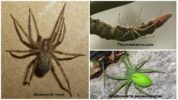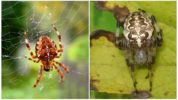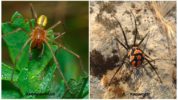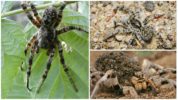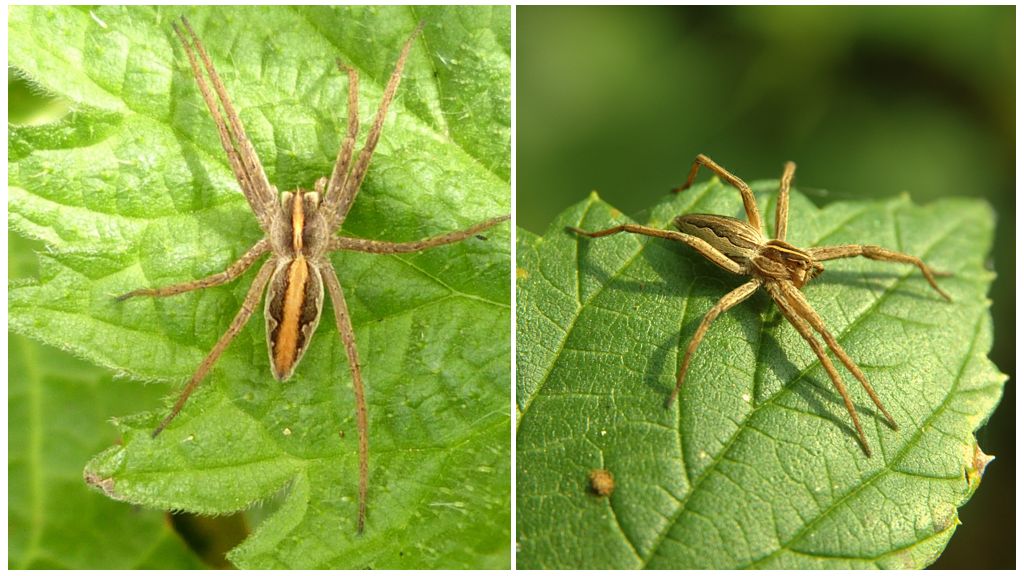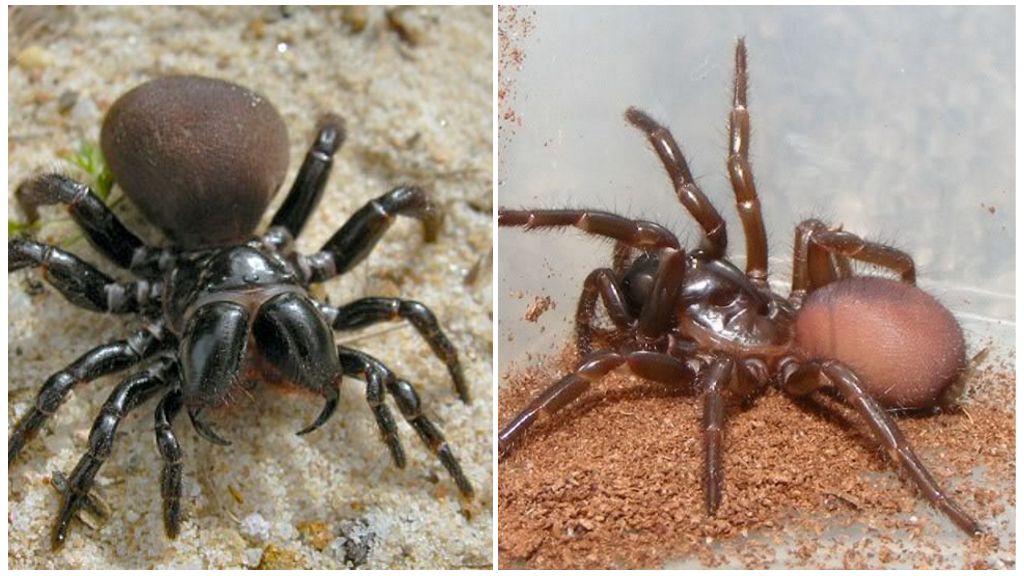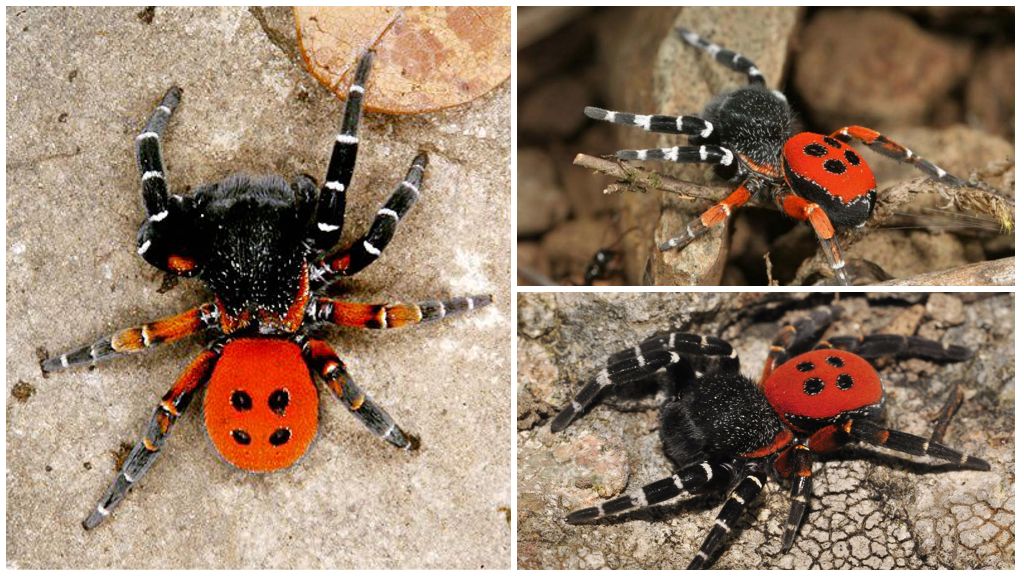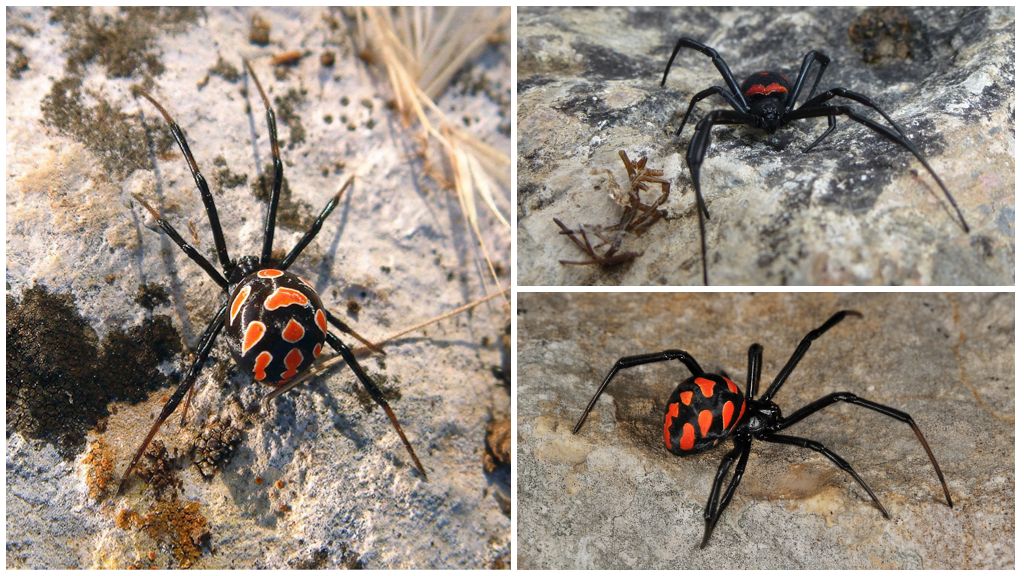- Spiders of the Moscow Region
- Cross spider
- Spiders of the Moscow Region
- South Russian view of the tarantula
Arachnids belong to the arachnids class arthropods, which differ from insects number of legs (8, not 6). They are widely distributed around the world, more than 42 thousand are known. species of spiders, and some species live in the Central European part of Russia, including in the Moscow region. Spiders near Moscow live both indoors with people, and in the wilderness.
On a note!
Arachnids are predators, because they feed on insects. They pre-catch them through the web or in other ways, and then immobilize by introducing special saliva, which is produced by the glands. Some species are poisonous, while others are completely harmless to humans. Below are photos and names of various species of spiders living in the Moscow region.
Harmless arachnids near Moscow
Non-toxic spiders include those species whose poison is absolutely non-toxic to humans, and acts only on insects. Several central arthropods live in central Russia: brownies, hayers, side walkersknitting spiders, etc.
House spiders
The most common spiders around the world are browniesthat got their name from their close proximity to people's homes. Belong to the family funnel. They are found in the apartment, outbuildings in the country or in the city. Spider web has the shape of a funnel, he begins to weave his hair in a dark corner under the ceiling or even behind a cabinet.
Interesting!
The “house” itself usually sits in the middle, waiting for the prey that has arrived or rushed in, after which it quickly runs up the strings and deals with the insect.
Distinctive features of the house spider:
- female size - 12 mm, male - up to 10 mm;
- chitinous cover is painted in gray-brown shades;
- on the back there is a pattern of brown spots;
- tarsus 2 times longer than body.
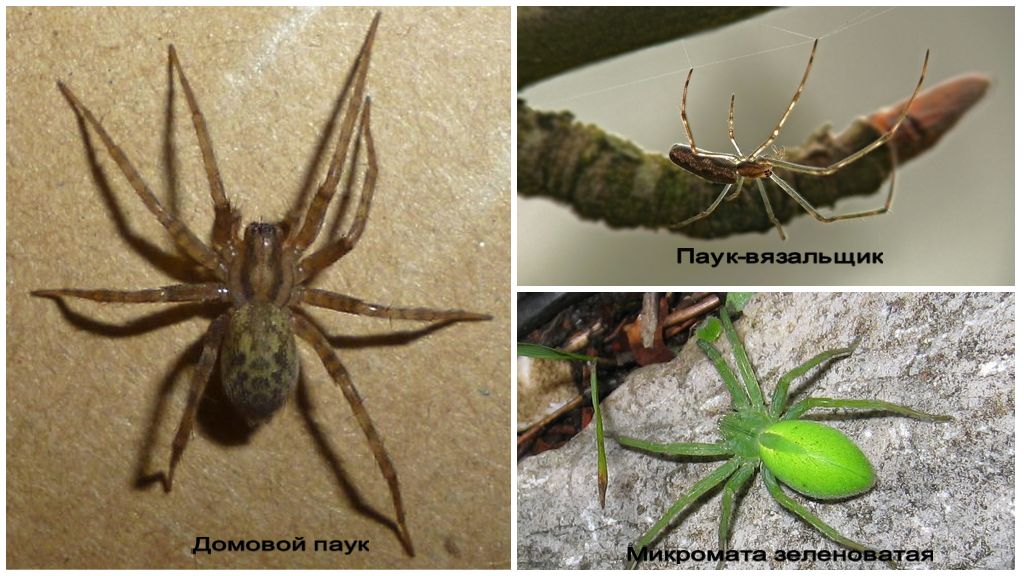
Knitters
This species lives only in the natural environment, avoiding encounters with humans. Knitters weave huge circular webs designed to catch only one type of insect - louse mosquitoes. For a spider, they are their favorite treat.
Differences from other types of spiders:
- the body has an elongated shape;
- the size of the females is 10 mm, the males are smaller;
- legs are very long;
- jaws (chelicera) are covered with outgrowths.
Interesting!
Knitters have an interesting feature: in case of danger, they stretch their legs along the body, turning visually into a small straw, almost imperceptible against the background of leaves and trees. When touched, the spider falls down and runs away.
The micromat is greenish
This species of spiders lives in forests, settling among grass and plants. Its bright color helps him hide among the green parts of plants. Micromat sizes are small - the largest green spider barely reaches 1 cm. Their poison is non-toxic and poses no danger to people.
Poisonous Spiders of Moscow Region
On the European territory of Russia and in the Moscow region, you can find arachnids, which release quite toxic poison. It is able to cause a person not only discomfort after a bite, but also lead to health complications.
To identify such a dangerous spider, you need to know how it looks and behaves in case of danger (data are given in accordance with the official identifier of spiders in Russia).
Cross
Cross spiders They prefer to eat flying insects, which include mosquitoes, flies, bees, butterflies, etc. They hunt with the help of the web. When the prey is already entangled in the nets, the spider runs up to it and injects a special fluid called digestive juice, because it turns the victim’s body into a partially digested state. Having waited a certain time, the crosspiece eats its victim.
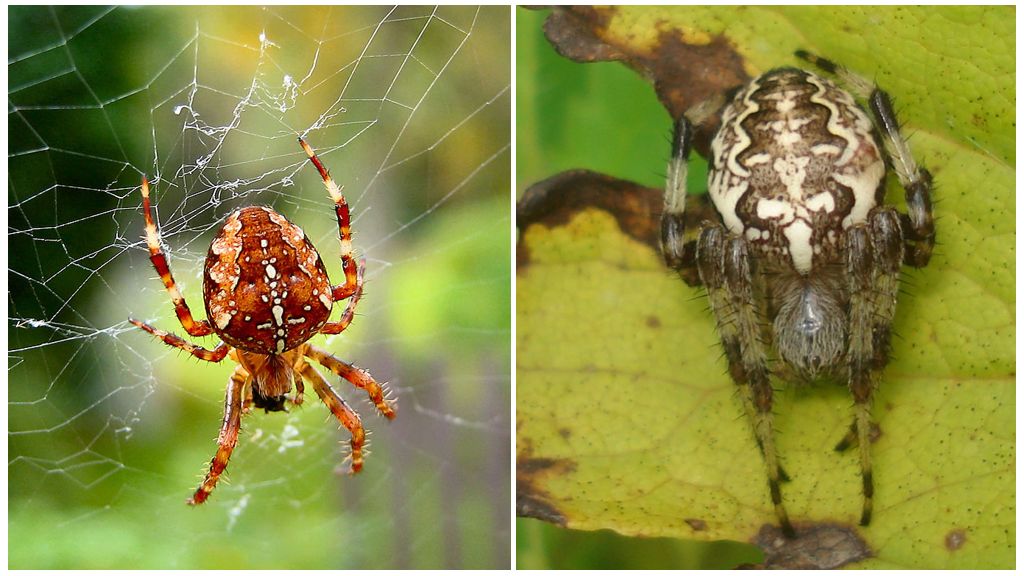
If the spider is full, it leaves the prey in reserve, hanging it on the edge of the web. Crosses are found in mixed and pine forests of the Moscow Region, in swamps, meadows and arable lands, as well as in gardens (rarely).
External signs:
- the body is covered with a special substance and looks shiny, as if covered with wax (this is necessary for a spider to reduce evaporation of moisture);
- a pattern resembling a cross is visible on the upper part of the abdomen;
- females up to 2.5 cm in size, males - 2 times smaller;
- the cephalothorax has a “shield” on which 4 pairs of eyes are located.
On a note!
The danger of a bite of a cross is connected only with the possibility of infection and the likely individual intolerance of its toxins.
Hirakantida
This species refers to the most poisonous spiders in Russialiving in central Russia. Hirakantids settle among grass and shrubs, preferring the natural environment. By nature, they are roving hunters who go fishing at night. When the victim touches the spider, he quickly attacks her. The main diet consists of caterpillars, moths, aphids, grasshoppers and ticks.
Important!
In some species of chiracantids, the hatched offspring shows the ability to matryphagy, i.e., eating the female protecting them (mothers spider).
Distinctive features of a spider:
- body size 5-15 mm;
- the body is painted in light brown, yellow-green shades;
- the abdomen has an oval shape, pointed at the end;
- fore tarsus 2 times as long as body.
After a bite of a chiracanthide, a burning pain may appear, which then spreads to the surrounding tissues of the limb. Then the lymph nodes that are in the bite zone begin to swell and ache, then edema and impaired joint mobility are formed. Some people may have breathing problems. Local negative symptoms usually go away after 12-48 hours.
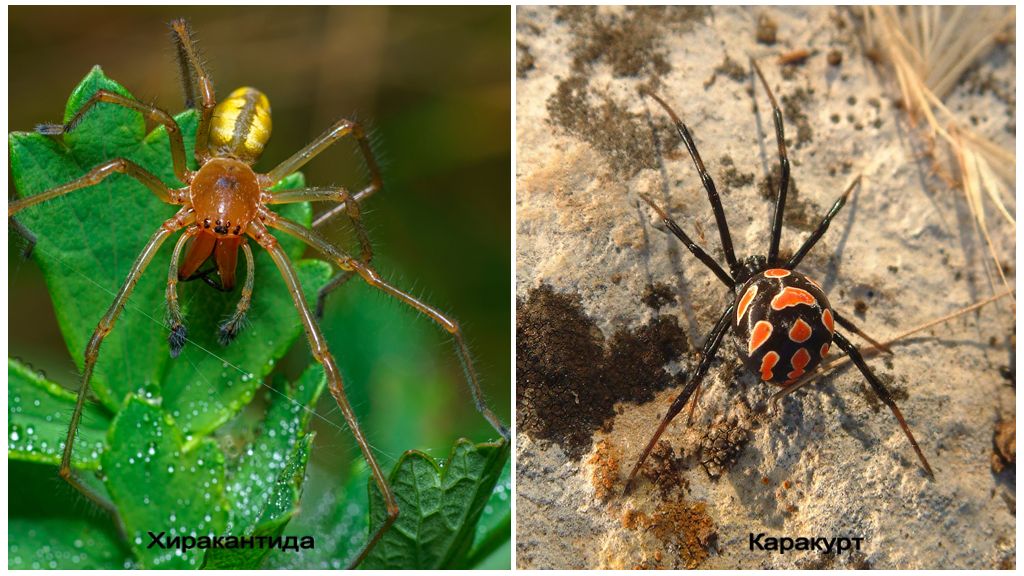
Karakurt
These arachnids belong to the genus black widows and are the most poisonous. The body color is specific: on the glossy black cover there are 13 bright red spots bordered by a white stripe. The body size of the female can reach 2 cm, and the male - 0.7 cm.
On a note!
Such biting spiders are rarely found in the suburbs, however, during the hot summer season, they sometimes migrate from neighboring regions.
Per person karakurt can attack only in case of danger on his part, in order to protect himself. The most dangerous is the female, which is able to bite the skin with her jaws to a depth of 0.5 mm. Therefore, one way to provide first aid after a spider bite is a quick cauterization of a bitten place with a burning match (for 2 minutes), which can prevent further infection.
Already 15 minutes after the bite, severe pain appears that spreads throughout the body of the bitten, then passes to the back, chest and lower back. The abdominal muscles become very tense, shortness of breath and a rapid heartbeat, headache, dizziness begin, and the skin turns pale.
In Russia, for treatment of people after a bite of a “steppe widow”, they use anti-Karakurt serum and intravenous injections of medications, therefore treatment is possible only in a hospital, after going to a doctor.
In addition to the "black widow" in the suburbs, you can meet a white spider, which belongs to the Karakurt family of gossips.The color of his body is usually white or yellowish. Instead of a characteristic pattern, there are 4 recesses forming a rectangle, the legs are painted in yellow-brown. White karakurt live in the steppe and desert zones, in the Moscow region are very rare. The poison is less toxic and is dangerous only for children and the elderly.
South Russian view of the tarantula
One of the largest spiders in central Russia - south russian tarantula, females of which can reach 3 cm, and males are smaller in size (2.5 cm). The chitinous cover has a gray-brown color, less often - red or brown with a pattern on the abdomen. The whole body and legs are covered with dense short hairs.
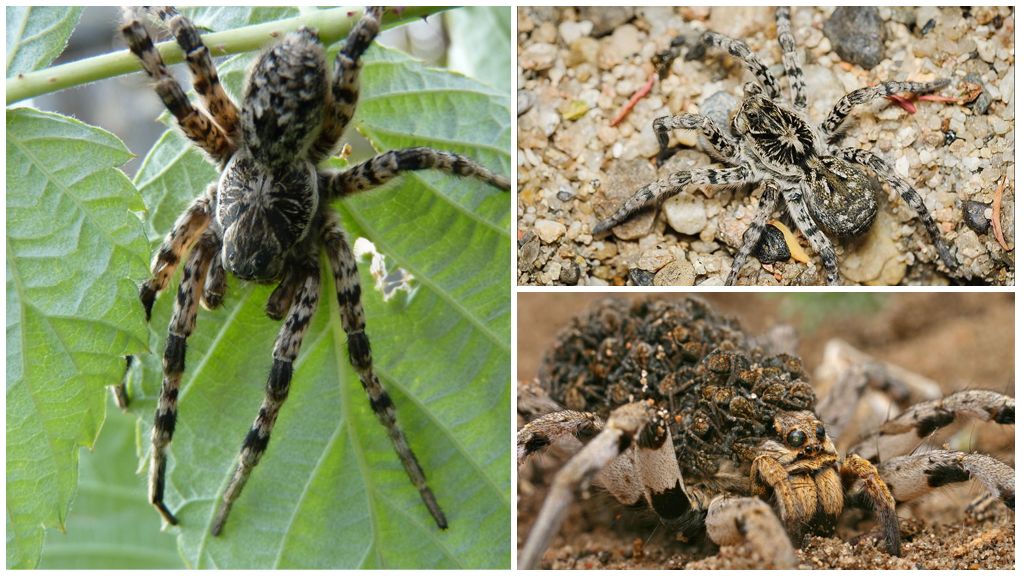
Their usual habitat is steppes and forest-steppes, semi-deserts, where they dig holes that extend 40 cm vertically downward. Inside tarantula covers the walls with its own web. Waiting for prey at night, sitting at the entrance. When an insect appears, it quickly pops up and inflicts a bite.
Interesting!
It bites the tarantula only with self-defense, at this moment it bounces high (up to 15 cm in height) and instantly sticks the chelicera into the skin. The poison of the tarantula is less toxic, after its bite there is swelling, and the skin turns yellow for a long period (up to 2 months), some health problems may occur in humans.
When meeting with any species of spiders in the forest or in nature, it is necessary to exercise caution and not try to touch them or show interest. This is the only way to ensure your safety, because the attack and bite of a spider can occur only for self-defense.
